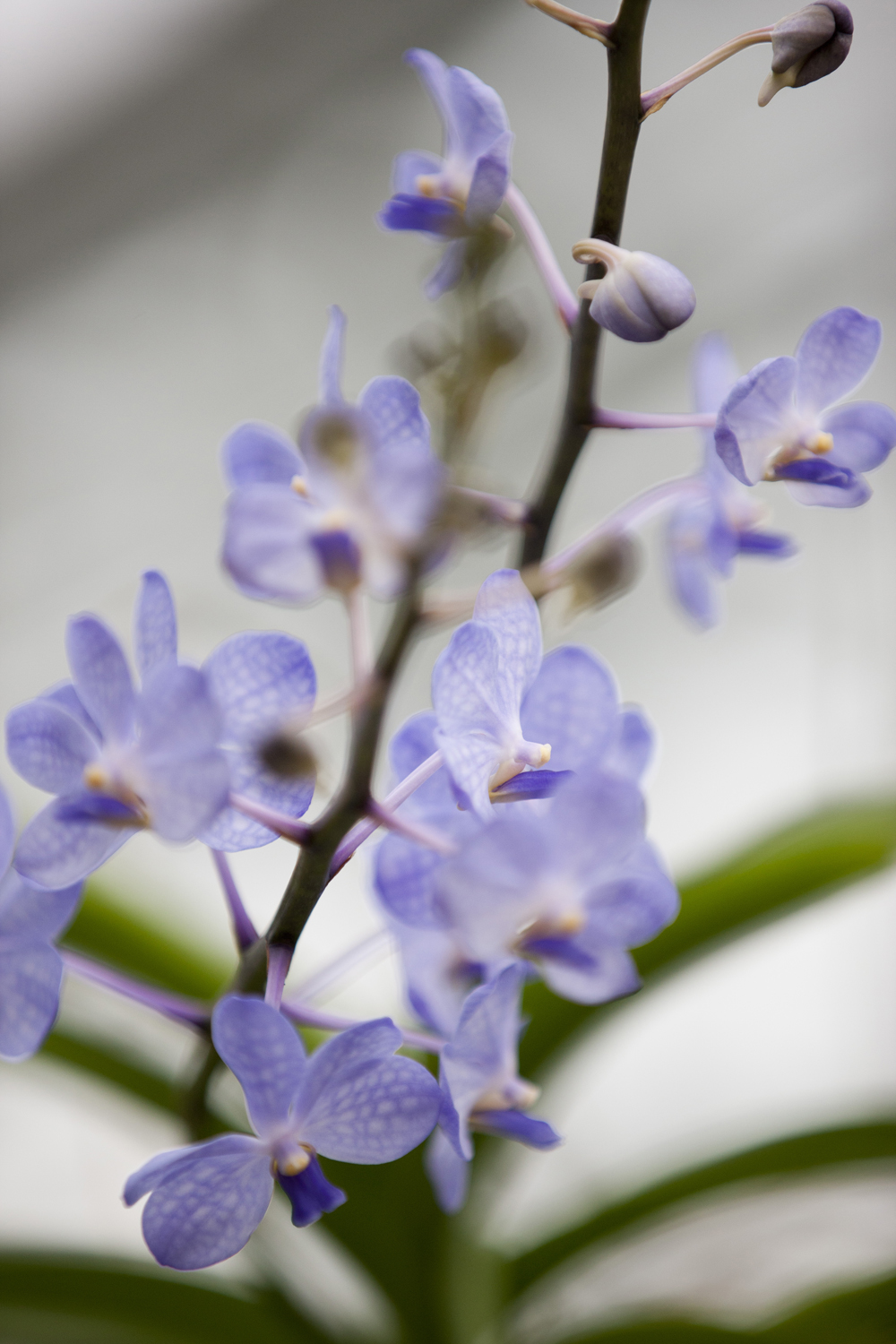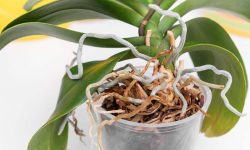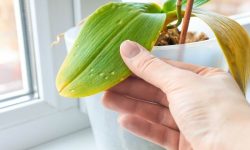Orchids are one of the most popular and well-known cam plants. Cam plants are those that have a C4 photosynthetic pathway. This means that they use carbon dioxide more efficiently than other plants, making them better adapted to hot, dry environments.
The orchid family is huge, with over 25,000 species! Orchids are found all over the world, in both warm and cold climates.
Orchids are one of the most popular houseplants because they are easy to grow and care for. However, there is some debate over whether or not orchids are actually carnivorous plants. While they do not typically eat insects, they do produce a sweet nectar that can attract prey.
In addition, their roots are adapted to absorb nutrients from the environment, which means that they could potentially benefit from insect meals.

Credit: www.nybg.org
Do Orchids Do Cam?
Orchids are one of the most popular houseplants, and for good reason! They’re beautiful, they’re easy to care for, and they come in a wide variety of colors and sizes. But did you know that orchids are also one of the few plants that use a process called CAM (crassulacean acid metabolism)?
CAM is a process that allows plants to open their stomata (pores) at night when it’s cooler and close them during the day to prevent water loss. This process helps plants survive in hot, dry climates where water is scarce. Orchids are native to tropical rainforests, so they’re well-adapted to using CAM.
One benefit of using CAM is that it allows plants to store water in their leaves overnight. This stored water can then be used during the day when the stomata are closed and the plant is not taking in new water from the soil.
Another benefit of using CAM is that it reduces the amount of light needed for photosynthesis.
Since the stomata are only open at night, there’s less light available for photosynthesis to occur. However, since CAM plants can store water in their leaves, they don’t need as much light as other plants do in order to grow and thrive.
If you have an orchid at home, you may have noticed that it doesn’t need as much watering as other houseplants do.
That’s because orchids use CAM! So if you live in a hot, dry climate or if you tend to forget to water your plants regularly, an orchid might be a good choice for you.
What are Examples of Cam Plants?
CAM plants are a type of plant that have the ability to open their stomata at night and close them during the day. This allows them to conserve water by reducing evaporation. Some examples of CAM plants include cacti, agave, and some eucalyptus trees.
How Many Cam Plants are There?
There are over 10,000 species of CAM plants.
What are the C3 C4 And Cam Plants?
C3, C4 and CAM plants are all photosynthetic plants that have evolved different strategies to cope with conditions of high temperature and/or low water availability.
C3 plants are the most common type of plant in the world and include species such as wheat, rice, soybeans and potatoes. These plants use a simple pathway for carbon fixation, meaning that they fix carbon dioxide (CO2) into organic matter using the enzyme RuBisCO.
The main disadvantage of this pathway is that it is very inefficient under high temperatures and/or low CO2 concentrations – both of which are often found in hot, dry environments. As a result, C3 plants tend to be less productive than C4 or CAM plants in these conditions.
C4 plants have evolved a more complex pathway for carbon fixation that involves two types of chloroplasts: those in the mesophyll cells (the majority of chloroplasts in the leaf), and those in specialised bundle sheath cells surrounding the vascular tissue.
In this pathway, CO2 is first fixed into an organic compound called malate by enzymes in the mesophyll cells.
This malate is then transported to the bundle sheath cells where it is converted back into CO2 and used for photosynthesis. This process takes place inside organelles called peroxisomes, which means that very little O2 is required (unlike in regular photosynthesis).
As a result, C4 plants can fix CO2 very efficiently even under high temperatures and/or low CO2 concentrations – making them much more productive than C3 plants in these conditions. However, this extra complexity comes at a cost: C4 plants require more energy to produce than C3 plants.
Finally, CAM (crassulacean acid metabolism) plants are similar to C4 Plants but with some key differences.
In CAM Plants , instead of fixing CO2 into malate ,they instead fix it into an organic compound called phosphoenolpyruvate(PEP). Unlike malate , PEP can be stored within the vacuoles of plant cells . This means that unlike other Photosynthetic Plants ,CAM Plants can open their stomata during night time when its cooler & close them during daytime when its hotter .
By doing so they reduce water loss through transpiration & also prevent entry of hot air laden with water vapour(humidity) which would otherwise cause damage to their leaves .
Types of Photosynthesis in Plants: C3, C4, and CAM
Cam Plants Examples
There are many different types of cam plants, but they all have one thing in common: they use a process called CAM (crassulacean acid metabolism) to photosynthesize. This means that they open their stomata at night, when it is cooler and more humid, and close them during the day to prevent water loss.
CAM plants are well-adapted to arid conditions and can be found in deserts all over the world.
One of the best known examples is the cactus. Other CAM plants include certain succulents, such as agave and aloe vera, as well as some orchids and bromeliads.
CAM plants are often grown as houseplants because they are relatively easy to care for.
They don’t need much water, so they can go for long periods without being watered. However, they do need bright light, so a sunny windowsill is ideal.
C4 Plants
C4 plants are a type of plant that uses the C4 photosynthetic pathway to convert light into chemical energy. The C4 pathway is more efficient than the other pathways (such as the Calvin cycle) and allows these plants to grow in hot, dry conditions. These plants are found in tropical and subtropical regions around the world.
Cam Photosynthesis
Photosynthesis is the process that produces organic molecules from simple inorganic molecules from the sun’s energy. This process is used by plants to create their own food. The light energy liberates electrons from water molecules which combine with CO 2 to form
-O-P-O-CH 2 -, a sugar molecule also known as ribulose biphosphate (RuBP). In order for photosynthesis to occur, two things are required: light and chlorophyll. Chlorophyll is a green pigment found in chloroplasts, organelles unique to plant cells that serve as the site of photosynthesis.
There are two types of photosynthesis: C 3 and C 4 .
C 3 plants, such as wheat and rice, fix carbon dioxide into an organic molecule using the Calvin Cycle. In the first step of the cycle, enzymes inside the chloroplast convert CO 2 into 3-carbon molecules called phosphoglyceric acid (PGA).
In the second step, PGA undergoes a series of reactions catalyzed by different enzymes until it is converted back into RuBP. These reactions use up ATP and NADPH produced during light interference. The final step recycles RuBP so that the Calvin Cycle can start over again.
All these steps together result in one glucose molecule being produced for every sixCO 2 molecules that were originally present.
C 4 plants have adapted to areas with high temperatures and intense sunlight by developing a special type of photosynthesis called “crassulacean acid metabolism” or CAMphotosynthesis . In CAM plants , such as cacti, CO 2 enters through stomata during night when temperatures are cooler and then diffuses into mesophyll cells .
There it combines with malate , an organic compound , to form oxaloacetate . When daylight comes , stomata close to prevent water loss but CO2 can still enter mesophyll cells via diffusion . At this point , enzymes convert oxaloacetate into PEPcarboxylase uses ATP to add another carboxyl group (-COOH) onto PEP forming pyruvate which diffuses out of mesophyll cells and into bundle sheath cells where it is converted back into malate thus completing the cycle .
Which Plant is a C4 Plant?
C4 plants are a type of plant that uses a process called C4 photosynthesis to convert sunlight into energy. This process is more efficient than regular photosynthesis, and allows C4 plants to grow in hot, dry conditions. Some examples of C4 plants include corn, sorghum, and millet.
Photorespiration
Photorespiration is a process that occurs in the chloroplasts of plants when photosynthesis is taking place. It results in the production of oxygen and carbon dioxide, which are then released into the atmosphere. This process also uses up energy from the plant, which can lead to decreased growth or yield.
A Plant That Uses Cam Photosynthesis Would Most Likely Be Found
A plant that uses CAM photosynthesis would most likely be found in an environment with low light levels and high temperatures. This type of photosynthesis is more efficient at converting carbon dioxide into organic matter than regular photosynthesis, making it ideal for conditions where there is less sunlight available.
Which of the Following is Most Likely to Occur in a Leaf of a Cam Plant During the Day?
If you were to ask a group of people which of the following is most likely to occur in a leaf of a cam plant during the day, you would probably get a variety of different answers. Some might say that the leaf will experience transpiration, while others might say that photosynthesis will take place. So, which is it?
The answer is both! Transpiration and photosynthesis are two processes that occur simultaneously in the leaves of cam plants (and other plants). During the day, when there is plenty of sunlight available for photosynthesis to take place, water molecules in the cells of the leaves are evaporated into the air.
This process helps to cool the leaves and also provides water vapor for photosynthesis to occur.
Are Lidded Pitcher Plants Considered Cam Plants?
Are lidded pitcher plants considered CAM plants? In the lidded pitcher plants vs orchids comparison, it is important to note that while both species have evolved remarkable adaptations for survival, lidded pitcher plants are not classified as CAM plants like orchids. The distinction lies in the different methods these plants employ to obtain nutrients and energy.
C3 Photosynthesis
In C3 photosynthesis, carbon dioxide enters the leaf through the stomata and combines with ribulose bisphosphate (RuBP), a five-carbon sugar molecule, in the presence of the enzyme rubisco. This initial step forms two molecules of 3-PGA. These are then converted, in a series of reactions that require energy from ATP and NADPH produced by light-dependent reactions, into two molecules of glycerate 3-phosphate (GP).
Finally, GP is reduced to triose phosphate (TP) which is used to regenerate RuBP so that the process can continue. In hot or dry conditions, some of the GP produced may be diverted into other pathways such as photorespiration.
The net result of C3 photosynthesis is the conversion of one molecule of CO2 into one molecule each of TP and O2.
Are All Orchids Considered Cam Plants?
Not all orchids are considered cam plants. While certain orchid species have evolved to possess crassulacean acid metabolism (CAM), enabling them to conserve water by photosynthesizing at night, this adaptation is not universal among all orchids. The phenomenon of all orchids as cam plants is therefore not accurate.
Conclusion
Orchids are a type of plant that can change the way they grow based on the amount of light they receive. This means that they can grow in a variety of different climates and conditions. They are also known for being very resilient, which makes them a great choice for those who want to add some color to their home without having to worry about taking care of them too much.






